However, we don’t have much time to lament our current circumstances. Kenya’s wildlife are singularly focused on survival, diligently traversing the landscape in search of fresh water and browse. Meanwhile, we are doing everything we can to help them. Rescuing orphans, conducting veterinary treatments, mitigating human-wildlife conflict, fighting bushfires, ramping up anti-poaching patrols… I can honestly say that our teams are working flat-out from sunup to sundown, and often into the night.
This month’s Field Notes was inspired by one of our recent operations. To me, this event captures what the Sheldrick Wildlife Trust is all about — and it is one of those rare gems we need in difficult times: a story with a truly happy ending. (For another happy ending, discover the incredible saga to rescue a mother elephant and her baby, which unfolded just a few weeks after the story below).
– Angela Sheldrick
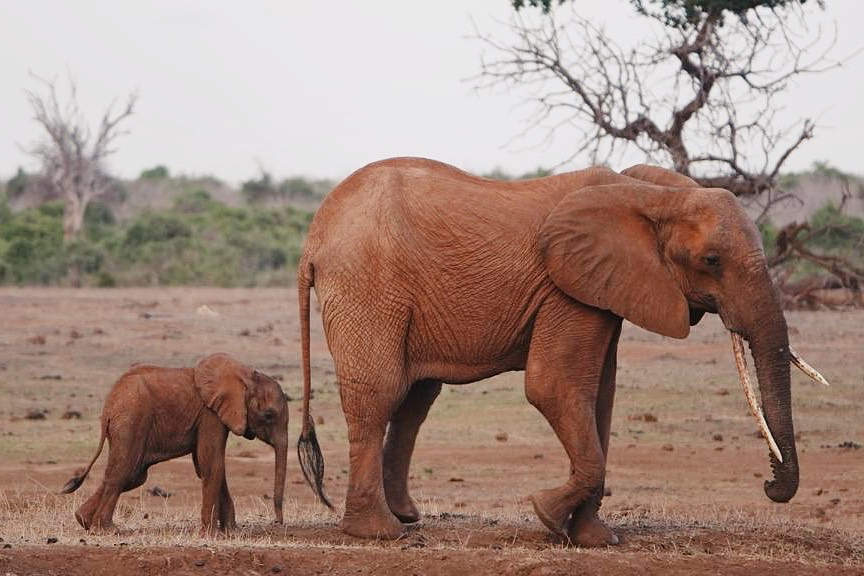
A Miracle in Tsavo
Family is everything to elephants. Unless fate intervenes, females remain together for a lifetime. Nurtured within their mothers for 22 months — the longest gestation period of any animal — calves are raised in a cocoon of love that will surround them for the rest of their life. In every herd, generations intertwine: Daughters become nannies, then mothers, then grandmothers and great grandmothers.

Raising a baby elephant is a multi-generational family affair
Even bulls, who are often simplified as the lone rangers of the species, lead a deeply communal existence. They usually travel in small groups, supporting their fellow males and scouting out places where their female loved ones will find safe haven.
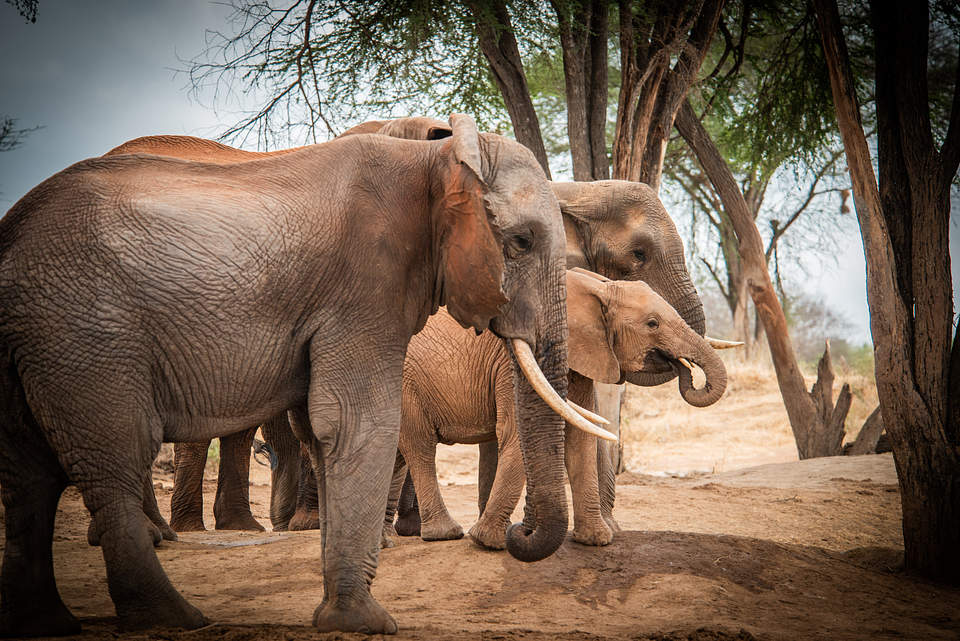
Even bulls, the scouts of elephant society, lead a communal existence
Only the most extreme circumstances will tear a family apart. If a calf is compromised, the entire herd will support it for as long as they can. However, the wild is all about survival. When one elephant puts the rest of the herd at risk, the matriarch must sometimes make the heartbreaking decision to forge ahead without it. Oftentimes, the mother and her daughters remain with the calf for as long as they can. But once the inevitability of its fate becomes clear, they too are forced to leave it behind.
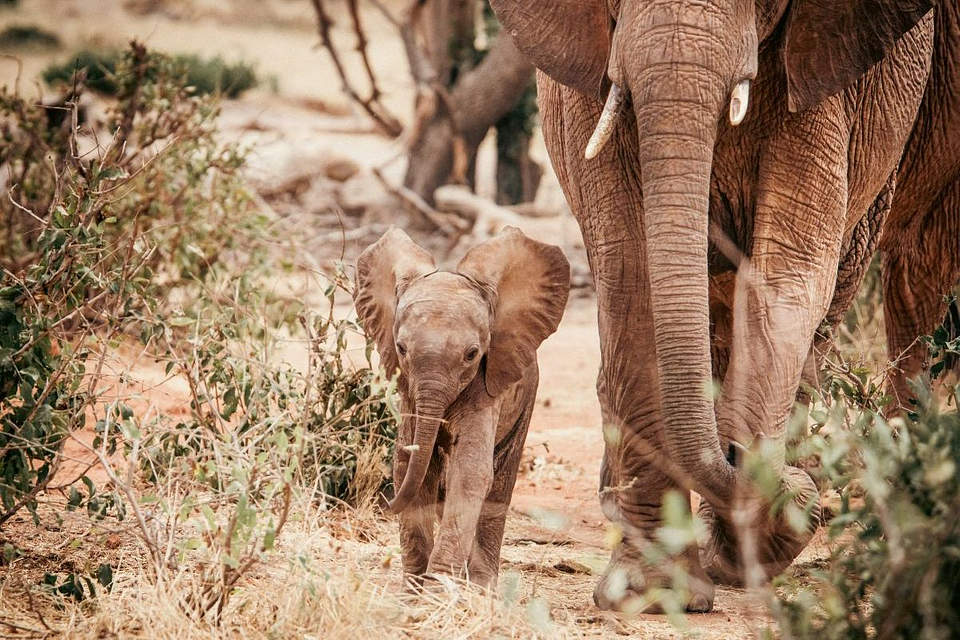
A mother will abandon her baby only under extreme duress
The wild world is a harsh place. Even the best of times are peppered with tragedies — but during the drought, they unfold with heartbreaking regularity. The number of orphans we rescue is always a telltale reflection of conditions in the field. This year, our herd has ballooned. Some orphans were simply too weak or compromised to go on, others lost their mothers to drought or human-wildlife conflict. Each was rescued only after all other avenues had been exhausted. Our first priority is always to keep wild families together, but sometimes, human malice or natural misfortune makes that impossible.
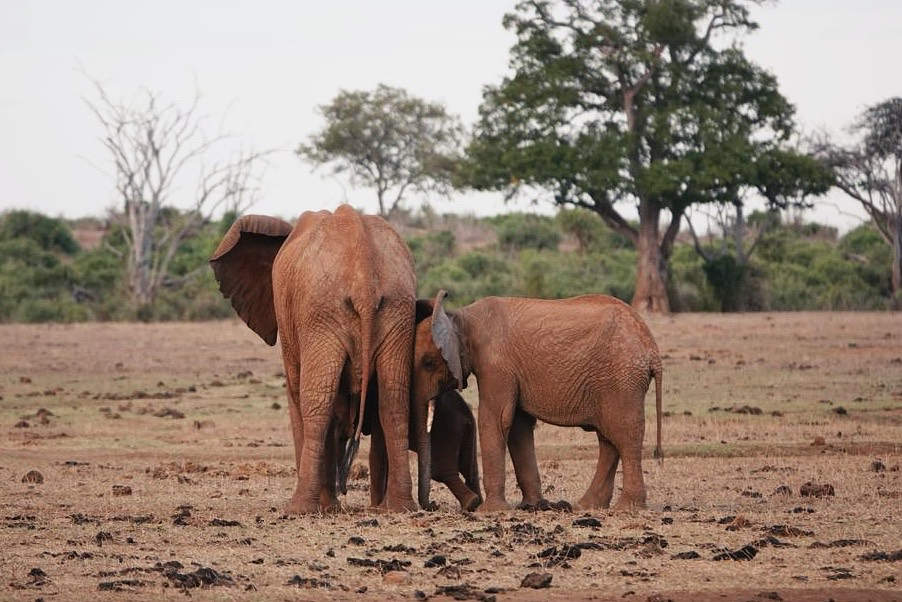
This was the heartbreaking sight that greeted our field teams
On the evening of 24th August, I received a devastating report. A small family unit, consisting of a mother, her adolescent daughter, and infant son, had been spotted near Ngutuni, in Tsavo East. They had dropped away from their herd — and it was immediately evident why: The infant had a seriously compromised hind leg, which caused him to walk slowly and with great discomfort. It was difficult to tell from a distance, but he appeared to have a Luggard-like injury. Given that Luggard had been maimed by bullets, we all feared the worst.
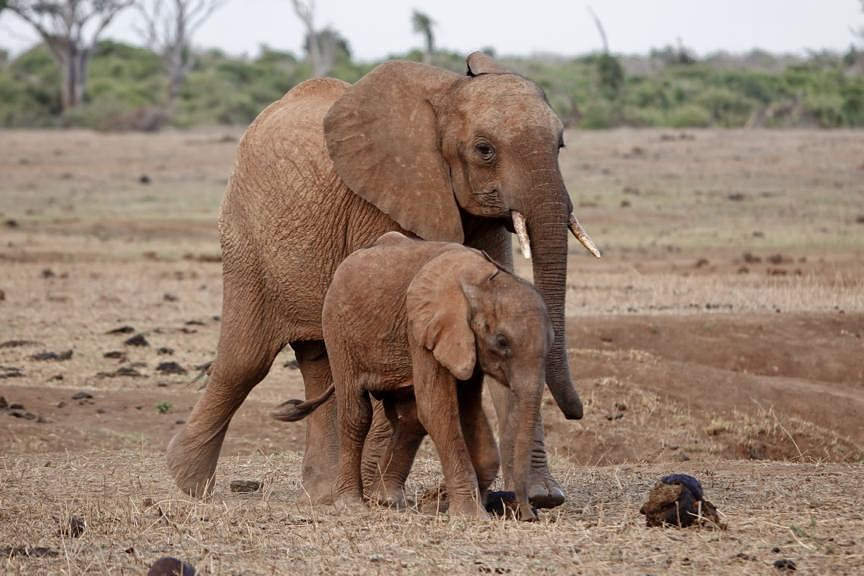
The calf appeared to have a Luggard-like injury, although it was impossible to know the extent from photos alone
We organised a treatment for the following morning. The Tsavo Mobile Vet Unit team gathered at the scene, unsure exactly what would unfold. If the calf was gravely wounded, KWS might recommend a rescue. This would offer him the best hope for survival and spare his family from a protracted, inevitable goodbye. Based on the initial reports, we hoped for the best but expected the worst.
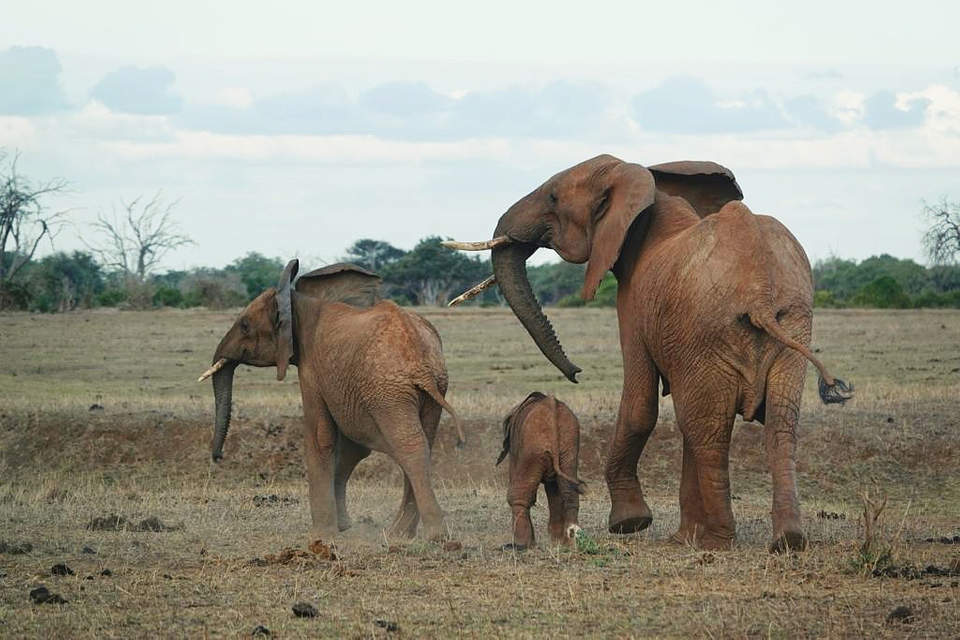
Despite his compromised condition, his mother and sister remained fiercely devoted to him
The family was easy to find, as they had not travelled far since the previous night. Every step was laboured for the calf, who was no more than a year old. His mother was a stately female with strikingly slender, asymmetrical tusks. Meanwhile, his big sister, who looked to be about eight years old, had clearly stepped up in her family’s time of need. She acted as her brother’s shadow, following his every step. Both mother and sister matched his pace, moving at an excruciatingly slow pace across the plains.
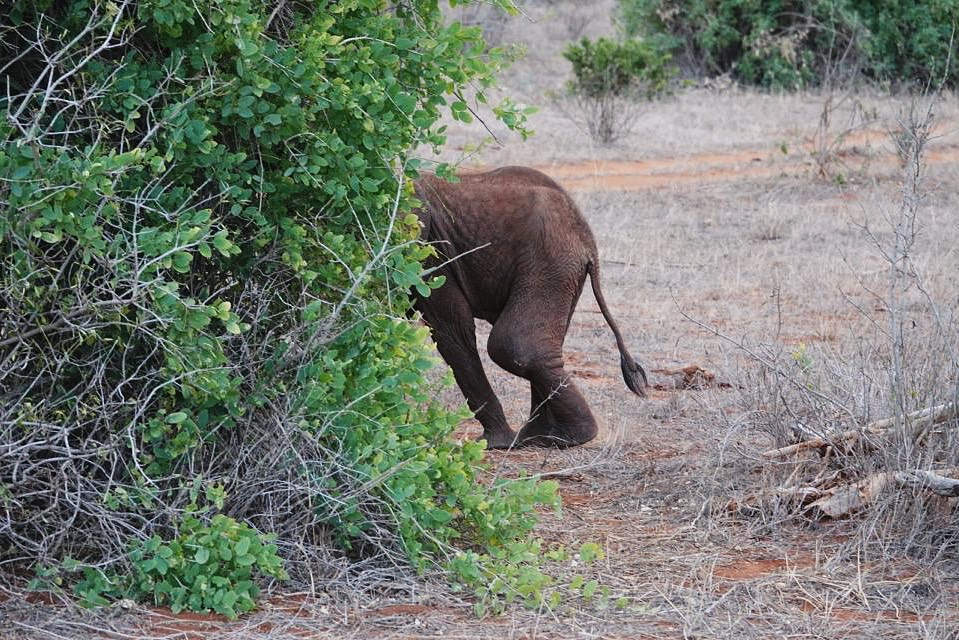
We all wondered – and feared — what was in store for this little calf
When the team converged, the eldest daughter made herself scarce, seeking refuge in the nearby scrub. The mother remained defiantly by her baby’s side, head raised and ears flared protectively. In order to commence treatment, Dr Limo, the team veterinarian, darted both, still none the wiser as to the cause or extent of the calf’s injury. The uncertainty of what was in store for this little family weighed heavily on all our minds.
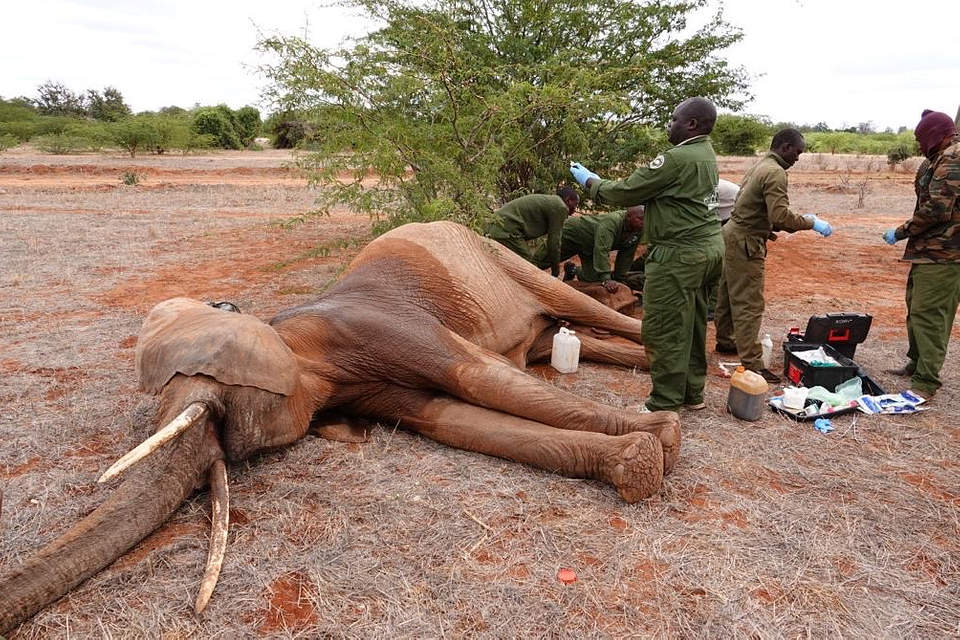
After darting both mum and baby, treatment could commence
And that is when we found a miracle in the most unlikely place. Dr Limo discovered that the calf’s leg was not broken or shattered, as we had feared, but merely mauled. ‘Merely mauled’ is no flippant turn of phrase; in this case, it really was the best case scenario. Lions had targeted the calf, but their hunt had been interrupted, likely when his herd intervened. The calf’s knee bore the brunt of the attack, leaving him with a painful joint injury. As the weeks passed, sepsis set in, which caused intense swelling and limited his mobility.
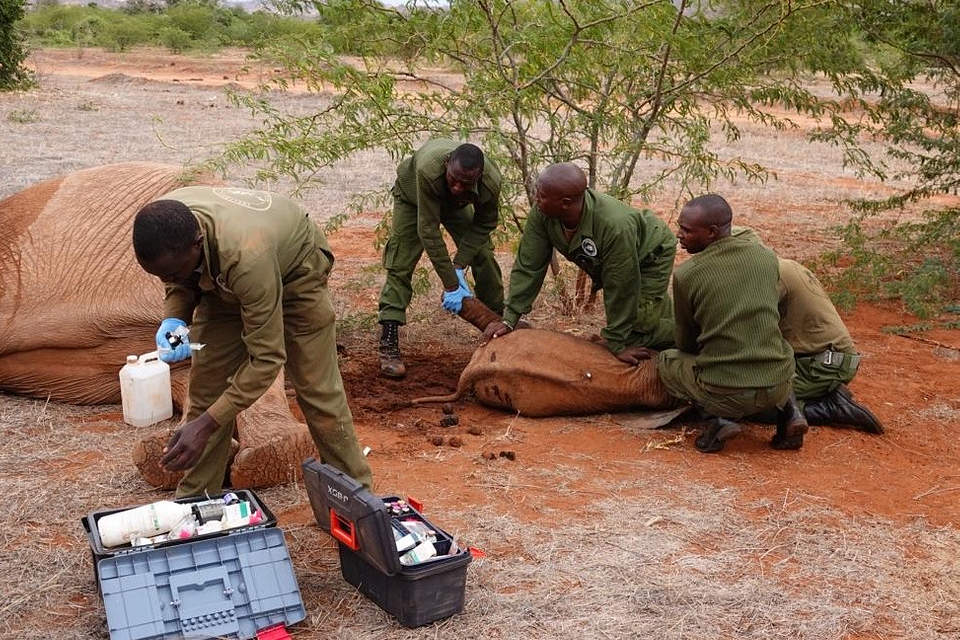
Much to our relief, he was ‘only’ suffering from a lion wound
Suddenly, a tragic maybe-rescue operation had transformed into a rather straightforward treatment. The team drained the pus from the wound and thoroughly cleaned the area, before administering antibiotics and anti-inflammatories. At last, it was time to revive mother and baby. The little patient awoke first, followed by his mum a few minutes later. They stood up side by side, a bit bleary but otherwise remarkably unfussed by the whole ordeal.

With initial treatment complete, Dr Limo was confident he would heal in the wild
Time and again, we have experienced the gratitude of a wild elephant. Before disappearing into the bush, they turn back and express their thanks through a long, lingering look. In that moment, the divide between species melts away, leaving two creatures who have found common ground.
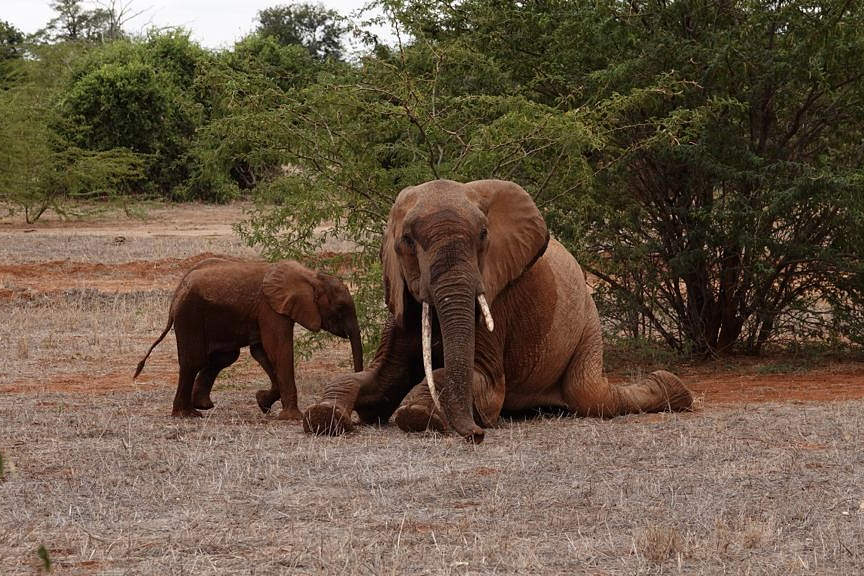
Side by side, mum and baby got to their feet
Slowly, the pair retreated into the bush, where big sister was waiting just out of sight. Dr Limo is optimistic that the calf will make a complete recovery, by his family’s side.
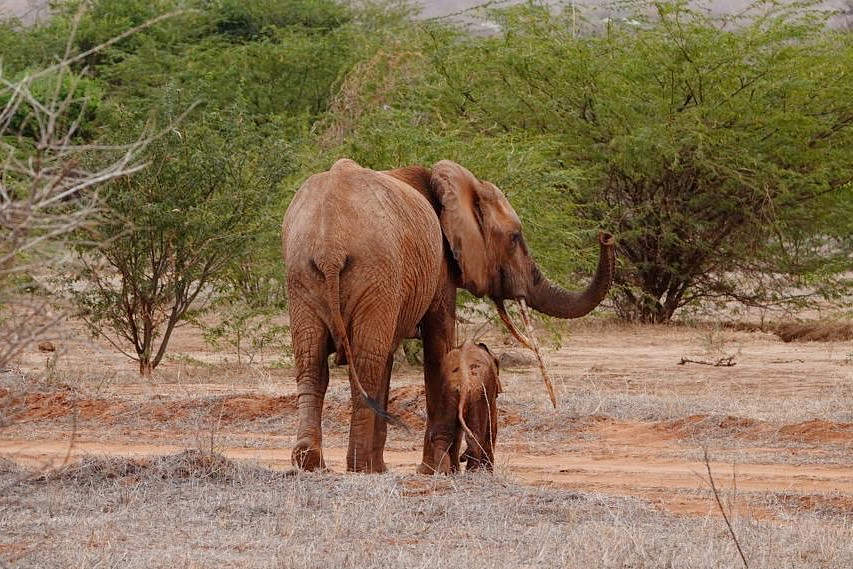
With a backwards glance, they disappeared into the bush, off to reunite with the eldest daughter
All well, this family has a long and fruitful future ahead of them. Yes, there will be difficult times ahead — but elephants are no stranger to adversity. After all, this little calf faced lions and lived to tell the tale. While we were poised to do whatever necessary to save his life, his ordeal could not have ended with a better outcome. This was but a thrilling chapter in a long and ongoing story.
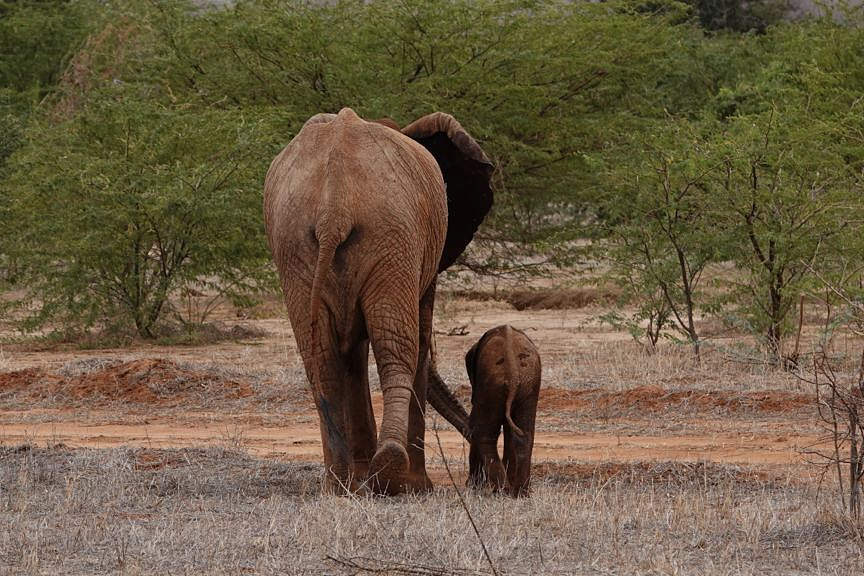
This was a story with the best possible outcome: a wild family kept together
As usual, Daphne put it best: “To be a baby elephant must be wonderful. Surrounded by a loving family 24 hours a day… I think it must be how it ought to be, in a perfect world.” These aren’t the words of an idealist, but an optimist. Every orphan we save, every wild family we keep together, is working towards a more perfect world.